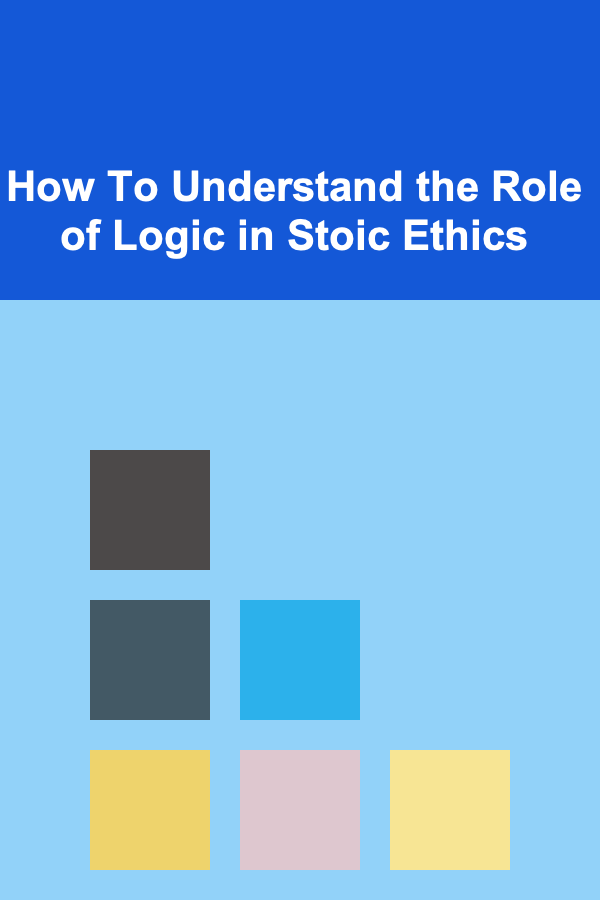
How to Master Medication Reconciliation as a Pharmacy Technician
ebook include PDF & Audio bundle (Micro Guide)
$12.99$5.99
Limited Time Offer! Order within the next:
Not available at this time

Medication reconciliation is a critical process in ensuring patient safety and effective healthcare delivery. It involves comparing a patient's current medication list with records from various sources to identify discrepancies, prevent errors, and optimize therapeutic outcomes. As a pharmacy technician, mastering the art of medication reconciliation is an essential skill that directly impacts the quality of care patients receive.
In this article, we'll dive deep into the key elements of medication reconciliation, its importance in healthcare, and the steps pharmacy technicians can take to excel in this vital process. From understanding medication history to navigating the complexities of electronic health records, this guide will provide you with the knowledge and tools necessary to master medication reconciliation in your role as a pharmacy technician.
Understanding Medication Reconciliation
What Is Medication Reconciliation?
Medication reconciliation is the process of comparing a patient's current medications with the medications they were previously prescribed to identify and resolve any discrepancies. This practice is essential to ensure that patients receive the correct medication at the correct dose and time, minimizing the risk of adverse drug events (ADEs).
The process involves obtaining a complete and accurate medication list from various sources, including:
- The patient's current medications (prescription and over-the-counter)
- Medications prescribed in the past, including those that have been discontinued
- Medications taken during hospitalization or while under care in a healthcare facility
- Medications from other healthcare providers (specialists, other pharmacists, etc.)
A key component of medication reconciliation is identifying discrepancies between the medication history and the medications listed in the medical record. These discrepancies may include omitted medications, incorrect doses, drug interactions, or changes that need to be made to the patient's regimen.
Why Is Medication Reconciliation Important?
Effective medication reconciliation plays a pivotal role in patient safety, reducing the risks of medication errors such as:
- Drug interactions: Mixing drugs that have dangerous interactions can result in adverse effects.
- Adverse drug reactions: Errors in prescribing or dosage can lead to harm or reduced efficacy.
- Duplicate therapy: Patients may unknowingly be prescribed the same medication by different providers.
- Incorrect doses: Patients may be given incorrect doses of a drug, leading to therapeutic failure or toxicity.
- Medication omissions: Important medications may be unintentionally left out, leading to negative outcomes.
Pharmacy technicians play a critical role in preventing these issues by ensuring accurate medication histories are obtained and that discrepancies are properly addressed.
Key Skills and Competencies for Pharmacy Technicians
1. Knowledge of Medications and Therapies
One of the most important aspects of medication reconciliation is a thorough understanding of pharmacology. Pharmacy technicians should be well-versed in the following:
- Drug classes and their indications: Familiarity with common drug classes, their uses, and potential side effects is essential for recognizing discrepancies and addressing concerns.
- Dosages and administration routes: Knowing the typical dosages for different drugs and how they should be administered helps in identifying errors in prescriptions or medication histories.
- Generic vs. brand names: Understanding the differences between generic and brand-name medications will help avoid confusion when reviewing medication lists.
By mastering pharmacological knowledge, pharmacy technicians can better identify discrepancies and potential risks.
2. Attention to Detail
Medication reconciliation requires exceptional attention to detail. Pharmacy technicians must scrutinize every aspect of a patient's medication list, comparing it against medical records, prescriptions, and verbal reports from healthcare providers. This includes:
- Verifying medication names, dosages, routes of administration, and frequencies
- Identifying any missing medications or errors in the prescribed regimen
- Ensuring that any medication changes are accurately documented in the patient's records
Small errors in medication records can lead to serious health consequences, making attention to detail a critical skill for pharmacy technicians.
3. Effective Communication Skills
Clear and efficient communication is essential for medication reconciliation. Pharmacy technicians frequently communicate with patients, healthcare providers, and other members of the care team. Effective communication is crucial for:
- Gathering accurate medication histories: Pharmacy technicians often interact with patients to gather information about their current medications. Being able to ask the right questions and clarify any uncertainties is essential to ensure that the medication list is accurate.
- Resolving discrepancies: When discrepancies are identified, pharmacy technicians must communicate with healthcare providers to resolve the issue, whether by contacting prescribing physicians, consulting pharmacists, or clarifying details with patients.
- Educating patients: Pharmacy technicians may need to explain changes in medication regimens, provide instructions on how to take medications, or help patients understand the importance of medication adherence.
Good communication helps ensure that patients receive the best possible care and minimizes the risk of errors.
4. Critical Thinking and Problem-Solving
Medication reconciliation often involves identifying discrepancies and resolving complex issues. Pharmacy technicians must be able to use critical thinking and problem-solving skills to:
- Determine the source of discrepancies, whether it's an incorrect prescription, outdated medication list, or patient misunderstanding
- Make decisions on how to resolve issues in collaboration with other healthcare providers
- Use evidence-based guidelines to determine the best course of action for medication adjustments
Pharmacy technicians must be proactive and analytical, ensuring that the final medication list is as accurate and complete as possible.
5. Familiarity with Electronic Health Records (EHR)
As healthcare systems increasingly rely on digital platforms, pharmacy technicians must be proficient in navigating electronic health records (EHR) and other computerized systems. These systems often contain valuable medication information, but they can be complex to use.
Pharmacy technicians should:
- Understand how to access and navigate patient medication histories within EHR systems
- Familiarize themselves with common EHR platforms and tools used in medication reconciliation
- Be aware of common issues in EHR systems, such as data entry errors, discrepancies between records, or outdated medication lists
Proficiency in EHR systems is essential for ensuring accurate and efficient medication reconciliation.
Steps to Master Medication Reconciliation
Step 1: Gather Accurate Medication History
The first step in the medication reconciliation process is gathering an accurate medication history. This can involve reviewing:
- Patient records: Examine the patient's current and previous prescriptions, over-the-counter medications, and supplements.
- Patient interviews: Ask the patient or their family members about any current medications they are taking, including prescriptions, OTC drugs, herbal supplements, and vitamins.
- Consultation with other healthcare providers: Contact other members of the healthcare team (such as physicians or specialists) to verify medication information or obtain missing details.
A comprehensive medication history is the foundation for the rest of the reconciliation process.
Step 2: Verify the Information
Once the medication history is gathered, the next step is to verify the information for accuracy. This includes:
- Comparing the medication list with current prescriptions: Check that the medication list matches the prescriptions on file, including dosage, frequency, and administration route.
- Checking for discrepancies: Look for missing medications, duplicate therapies, incorrect dosages, or potential drug interactions.
- Consulting with the patient and healthcare providers: If discrepancies are identified, reach out to the patient or their healthcare team to resolve them.
Verification is a critical step to ensure that no errors or discrepancies remain in the medication list.
Step 3: Identify and Resolve Discrepancies
If discrepancies are found during the verification process, pharmacy technicians must work with the appropriate healthcare professionals to resolve them. This may involve:
- Consulting with prescribing physicians: If a medication error or omission is identified, contact the physician to clarify the prescription or adjust the regimen.
- Updating the medication list: Once discrepancies are resolved, update the medication list to reflect the most accurate and up-to-date information.
- Communicating with patients: If necessary, provide patients with updated instructions on how to take their medications, and explain any changes to their regimen.
This step is crucial for ensuring that patients receive the correct medications and that the final medication list is comprehensive and accurate.
Step 4: Document and Communicate Changes
Once discrepancies are resolved, document the changes and communicate them to all relevant parties. This ensures that everyone involved in the patient's care is aware of the updated medication list, preventing future errors.
- Documenting changes: Ensure that all changes are accurately recorded in the patient's medication profile and EHR system.
- Informing the care team: Communicate the updated medication list to physicians, nurses, and other healthcare providers to ensure consistent and safe treatment.
- Providing the patient with an updated list: Give the patient a final, updated list of medications, along with clear instructions for use.
Effective communication and documentation help ensure patient safety and promote a coordinated care approach.
Step 5: Educate the Patient
Once the reconciliation process is complete, educating the patient about their medications is essential. Provide clear, concise instructions on:
- How to take each medication: Discuss the correct dosage, timing, and any special instructions (e.g., taking with food or avoiding certain activities).
- Potential side effects: Explain any potential side effects or warnings associated with the medications.
- The importance of adherence: Emphasize the importance of sticking to the prescribed regimen and not altering medication without consulting a healthcare provider.
Patient education helps ensure that patients understand their medications and are more likely to adhere to their treatment plans.
Conclusion
Mastering medication reconciliation as a pharmacy technician is a rewarding and essential skill that significantly impacts patient care. By understanding the process, developing key competencies, and following best practices, pharmacy technicians can help prevent medication errors, improve patient safety, and support effective healthcare delivery.

Creative Brand Identity: A Comprehensive Guide to Graphic Design for Business Professionals
Read More
How to Install DIY Home Security Measures Without Professional Help
Read More
How To Understand the Role of Logic in Stoic Ethics
Read More
How to Use Baking Soda for Home Cleaning and Odor Control
Read More
Leveraging the Power of Micro-Habits
Read More
10 Tips for Writing Cozy Mystery Subplots
Read MoreOther Products

Creative Brand Identity: A Comprehensive Guide to Graphic Design for Business Professionals
Read More
How to Install DIY Home Security Measures Without Professional Help
Read More
How To Understand the Role of Logic in Stoic Ethics
Read More
How to Use Baking Soda for Home Cleaning and Odor Control
Read More
Leveraging the Power of Micro-Habits
Read More